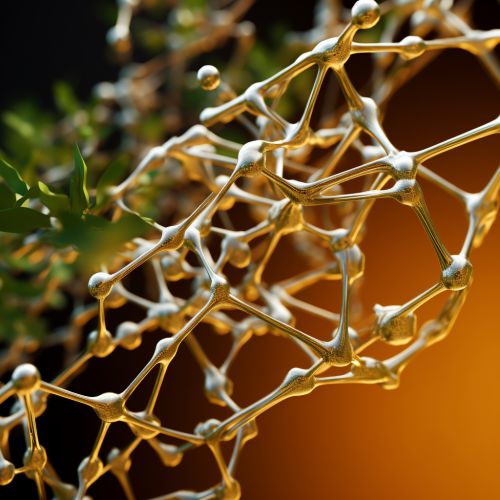Orotidine 5'-Phosphate Decarboxylase
Introduction
Orotidine 5'-phosphate decarboxylase (ODCase) is an enzyme that plays a crucial role in the biosynthesis of pyrimidines. This enzyme catalyzes the decarboxylation of orotidine monophosphate (OMP) to uridine monophosphate (UMP), the final step in the de novo synthesis of pyrimidines. This reaction is one of the most proficient enzyme-catalyzed reactions known, with a rate enhancement of nearly 17 orders of magnitude over the uncatalyzed reaction.


Structure
The structure of ODCase has been studied extensively using techniques such as X-ray crystallography and NMR spectroscopy. The enzyme is a homodimer, with each monomer consisting of a large domain and a small domain. The large domain is primarily responsible for dimerization, while the small domain contains the active site of the enzyme. The active site is located in a deep cleft between the two domains and contains a highly conserved aspartate residue that is critical for catalysis.
Mechanism
The exact mechanism of ODCase is still a subject of debate. However, the most widely accepted mechanism involves the formation of a vinyl carbanion intermediate. This intermediate is stabilized by the enzyme through the formation of a low-barrier hydrogen bond with the conserved aspartate residue in the active site. The decarboxylation of OMP is then followed by protonation of the intermediate to form UMP.
Biological Significance
ODCase is a key enzyme in the biosynthesis of pyrimidines, which are essential components of nucleic acids. As such, it is a potential target for the development of antimicrobial and anticancer drugs. Inhibition of ODCase can lead to a depletion of pyrimidine pools, which can inhibit DNA and RNA synthesis and thus cell growth and proliferation.
Inhibition
Several inhibitors of ODCase have been identified, including pyrazofurin and 6-azauridine. These compounds are analogs of OMP and bind to the active site of the enzyme, preventing the binding of the natural substrate. Other inhibitors, such as barbituric acid derivatives, bind to a different site on the enzyme and inhibit its activity allosterically.
